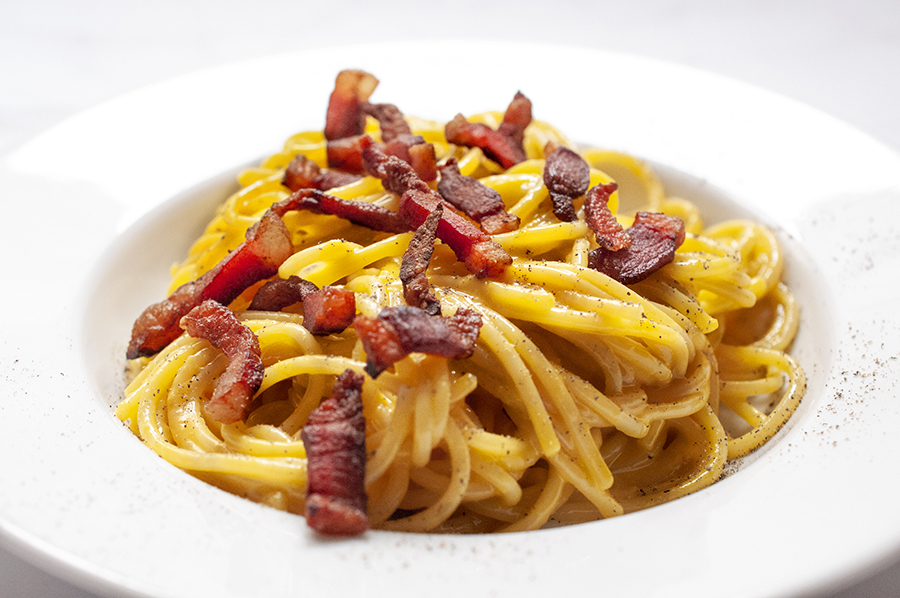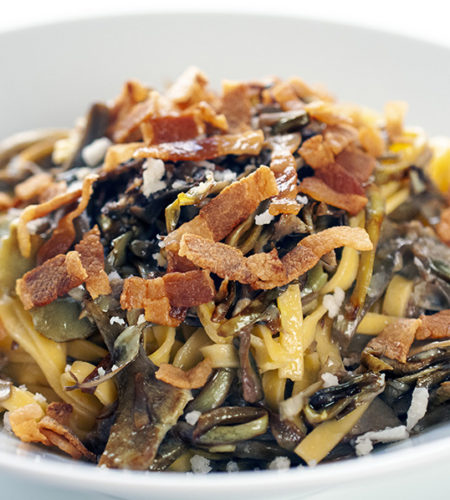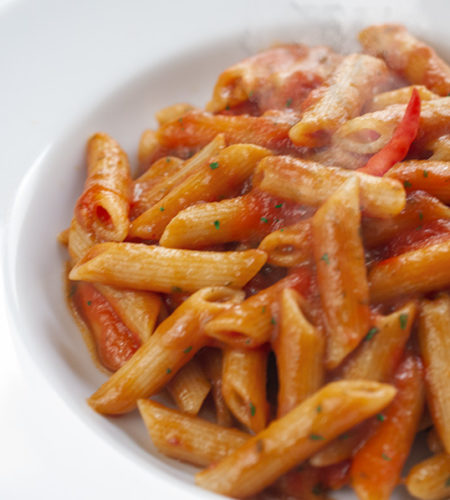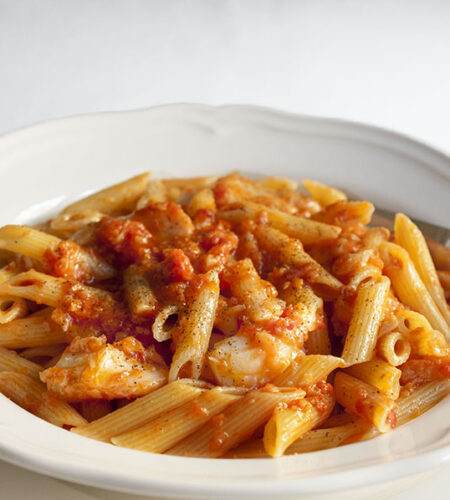Spaghetti alla carbonara is an iconic Roman recipe.
There are various theories on its origins.
Two are most popular: one certifies that it was a dish derived from the “cacio e ova” pasta of the Carbonari (charcoal workers) present between Lazio and Abruzzo. A second thesis asserts that it is a recipe invented at the end of the Second World War using the bacon and eggs that American soldiers distributed to the Roman population.
The origins of its invention and its name “carbonara” remain mysterious. However, one thing is certain: that is that since the 1950s, it has become increasingly popular on the menus of the Capitoline taverns.
The composition of the recipe has evolved from the post-war period to today, which has distorted it by subtraction, leaving only 4 ingredients: eggs, pecorino cheese, guanciale, and pepper.
There is no trademark of this recipe, like for the Gricia or the Amatriciana, which is why various versions are in circulation.
Don’t be a purist … eat it as you like, just make sure you avoid coagulating the eggs and turning it into an omelet!
- Preparation time: 20 minutes
- Ingredients for 4 servings
- Difficulty: Average difficult recipe
- Ingredients
- 12 oz (320 grams) of spaghetti
- 4 egg yolks
- 1 whole egg
- 4 oz (100 grams) of grated pecorino
- 4 oz (100 grams) of guanciale
- Salt and pepper to taste
- Instructions
- Put a large pot of water on to boil.
- Cut the guanciale into strips.
- In a pan, sauté the guanciale. As soon as it is crispy, drain it on absorbent paper. Leave the pan with the guanciale fat on the stove, with the stove turned off.
- In a bowl, mix with a whisk the egg yolks, the whole egg, half the bacon fat, and half the pecorino cheese.
- Salt the boiling water with the coarse salt, then toss in the pasta. Cook the spaghetti.
- Drain the pasta “al dente,” setting aside a cup of cooking water. Stir the spaghetti in the pan with the remaining fat from the guanciale and some spoons of cooking water. Turn the heat off. Add the egg and pecorino mixture and mix well, incorporating more left-over cooking water if necessary.
- Serve with a sprinkling of the rest of the pecorino cheese, the crispy guanciale, and the freshly ground pepper.
Tips to ensure the success of the dish:
- To cook the guanciale in the optimal way, it is important to start cooking with a cold pan. If you want it crunchy, you must first melt all the fat, then remove the fat from the pan and continue cooking until it becomes crunchy. Then remove the bacon from the pan and put it on absorbent paper to make it crisp.
- It is better to use yellow-fleshed eggs to get a nice, bright color.
- In restaurants, pasteurized eggs in brick are normally used to avoid the risk of salmonella.




